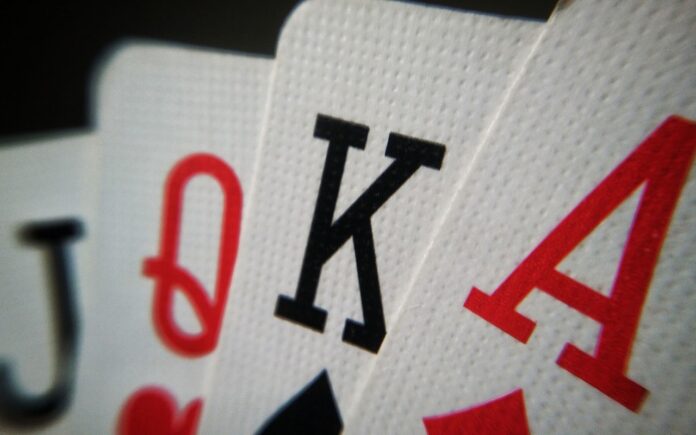
We have all seen that tense movie about Poker, featuring a scene where the hero must use apparent magical powers in order to draw a better hand, thereby winning the money needed to save his grandmother’s house. Bizarrely, movies often tend to focus on the luck aspect of the game, rather than the aspect that matters most, the betting.
Drawing a great hand really is the smallest part of the game, with the real skill largely based around betting. A skilled player will win no matter how lucky they are, given that they know how to play the table. A pair of 2s is, after all, only a bad hand if it ever has to go up against a better hand. If all opponents fold, a pair of 2s is the winning hand, regardless of if someone is holding a pair of kings.
Hence, knowing how betting works, and how to utilise it, is what sets beginners apart from professionals. Let’s take a closer look at how it all works and learn more about the art of betting in Poker.
Types Of Betting Rules – No Limit

Contrary to popular belief there are a number of possible rules when it comes to betting in Poker. The classic All In strategy may be dramatic in movies but is often forbidden in tournament games. The type of betting that does allow the All In strategy is referred to as No-Limit, and means that any size bet can be made, at any time. Many players like this possibility, given that it keeps the action interesting and unpredictable. Others, however, consider All In to be a nuisance, given how the move can be used by the player with the most chips to bully those that have less chips.
It also isn’t true, as suggested by movies, that players are allowed to start throwing in car keys or other items of valuables. At least not as far as professional games are concerned.
Fixed-Limit

Next, we have Fixed-Limit rules. In contrast to No-Limit, in Fixed-Limit the idea is that amounts are decided in advance and are stuck to throughout the game. This means, as would be expected, that a player can’t throw in a significantly bigger bet at any time, instantly pushing the stakes to a higher level.
Generally the rules are that betting is restricted to twice the value of the small and big blind.
Hence, if the blinds have been $2 and $4, betting will be $4 and $8. Additionally, betting rounds are capped after 3 or 4, further limiting how much can be thrown into the pot during any given round.
Pot-Limit

It is understandable why some players dislike No-Limit rules, but just as understandable that some think of Fixed-Limit as a drastically watered-down version of the game. Fixed-Limit essentially strips away much of the strategic power of betting, especially given that no matter if a player draws a Flush or a pair of 2s, they are technically never allowed to use the power of that hand as a means of leverage. Or, to put it another way; the potential power of bluffing is significantly reduced.
That is why Pot-Limit is seen as the best of both worlds. At least to some extent. The idea is that the maximum bet for every round is the amount that is already in the pot, assuming that any previous bets have already been called. So if the big and small blind add up to $10, the first bet can only be, at maximum, $10. The next bet, however, can be an additional $20, given that the previous bet and blinds add up to $20.
This means that betting amounts can still get high, but that each increase is ultimately limited in size, at least until such time as some rounds of betting have already concluded. Once again, the All In tactic is eliminated, though amounts can still gradually get high.
What Exactly Is Bluffing?

Based on the above systems, the obvious question now is but how does bluffing work into all of this? Yes, the basic idea of bluffing is that a bet is being made, despite the fact that the player knows their hand isn’t particularly valuable. Which is to say; they realize that the chances of someone else having a higher value hand are rather significant.
But the art of bluffing is a bit more than just trying to make others fold. In fact, many professionals consider bluffing to be a tactic that evolves gradually over the course of a game. For example, many professionals will bluff early on in a session, trying to establish the idea that they are reckless in other player’s heads. Thus, later on when large bets are made, the perceived threat seems less significant.
The point is that bluffing can be used in many different ways, ultimately keeping everyone guessing, and generally casting a sense of uncertainty about what is unfolding.
Of course, as already been mentioned, bluffing can have a very different impact depending on the rules used. No-Limit may indeed be a bluffing enthusiast’s paradise, and so the game should be approached with that angle in mind. To put it another way; anyone getting into a round of No-Limit Poker better have their bluffing strategy sharpened.
What Is Checking?

Last, we have checking. With all this talk of bluffing and betting, it can sometimes be overlooked that checking is an option. When it comes time to bet, it is, of course, an option to simply check, thereby letting the round move forward without any money added to the pot. Many tend to think of a check as a declaration that the player has nothing happening with their hand but believing this would be misunderstanding the rules.
A strategist will know that there is no better time to check than when they have a particularly valuable hand, especially when playing for a big win at https://www.zarcasino.co.za/promotions. After suggesting to opponents that a hand of no value has been drawn with a check, the position of other players can then be determined, leaving room for a follow up bet.








